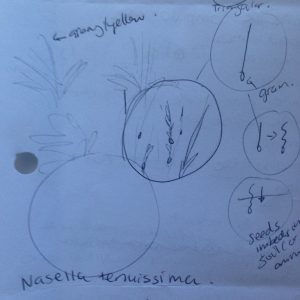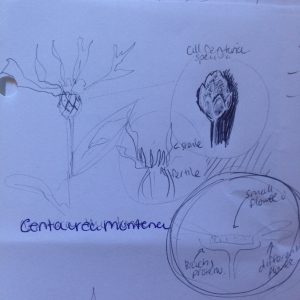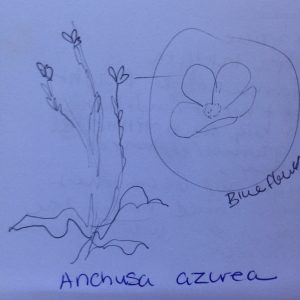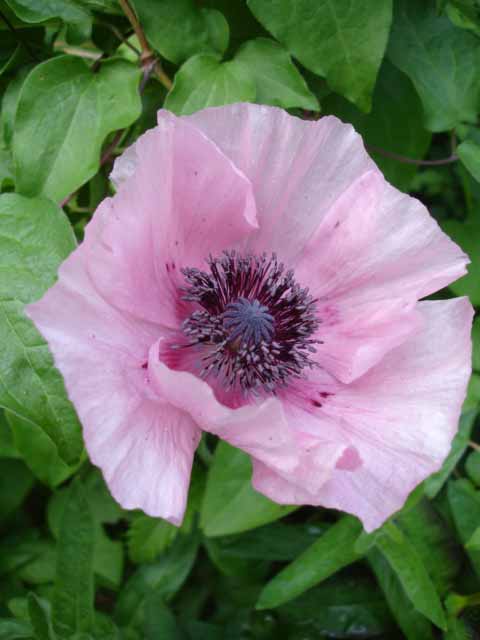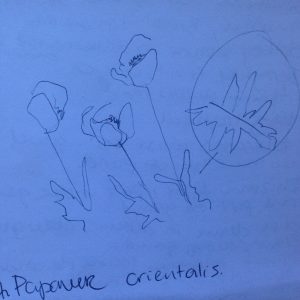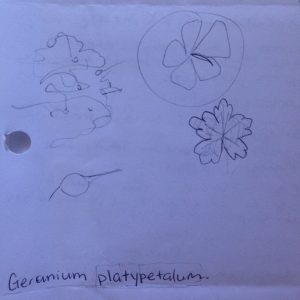Nasella Tenuissima – Mexican feather grass

http://1f7t5d3z9d72pt5vlamu45m4x.wpengine.netdna-cdn.com/wp-content/uploads/plants/originals/6803.jpg
Class Summary: Thin texture, continual splitting of strands as it blooms, seeds don’t do well in the rain. Seeds are known to coil, penetrating anything from soil to even animal skin. It is considered invasive in California. However, it is fine in our region. A tender plant that is zone 8 – will die with -10 degrees of frost. Otherwise, it is perennial and evergreen. It’s incredibly fast growing. Good for hot sites. Will act like an annual (dying back) in a cool garden site. Greenish small flower, turns brown in fall.
Site: Needs full sun, once established – occasional watering, likes hot, dry sites. Heat and drought tolerant. 7-10 Zone. Can be used as grass, container, or massing.
Aesthetics: Sculpturally, the thin, airy strands create a delicate texture which flows gently in the wind. The combination of the warm yellows, creams and light greens tones are appealing as they coordinate with the colour wheel schemes effectively.
I am seeing a trend of West Coast gardens pairing green conifers (Emerald green) with this type of grasses to create a curated informal look. I find the texture of this grass paired with flowering plants (i.e. Cone Flower or Lavender) particularly attractive and contrasting the form. Additionally, the tones of this grass seem to add a brilliant contrast to rustic forms – rocks/pebbles, rusted iron, hardscape etc. In general, it’s a good plant for contrasting of form and colour. However, I am not a big fan of it in massing – looks unshapely and milk toast.

https://s-media-cache-ak0.pinimg.com/236x/b1/1c/14/b11c143c78c098653d8981291eb06a25.jpg

https://s-media-cache-ak0.pinimg.com/736x/fb/18/bf/fb18bf07e552760f55996f111b9d8a51.jpg

http://files.thehighline.org/original_site/sites/files/images/Steven-S–5623243534_332652.jpg
Other Notes: Because of it’s shallow roots and toleration of heat/drought, this plant has been prized for green roofs. Lightweight, in shallow soil, it can tolerate lack of irrigation and would thrive in heat island effect. In addition, it can be used as a grass alternative. In Mexico, it is found in disturbed grazing sites – ‘old field’ habitat. It is considered invasive as it out competes other desirable meadow plants. Furthermore, it should be avoided as grazing food – not easily digestible/causes ball in animal stomachs. It has low nutrient value but provides habitat for birds.
